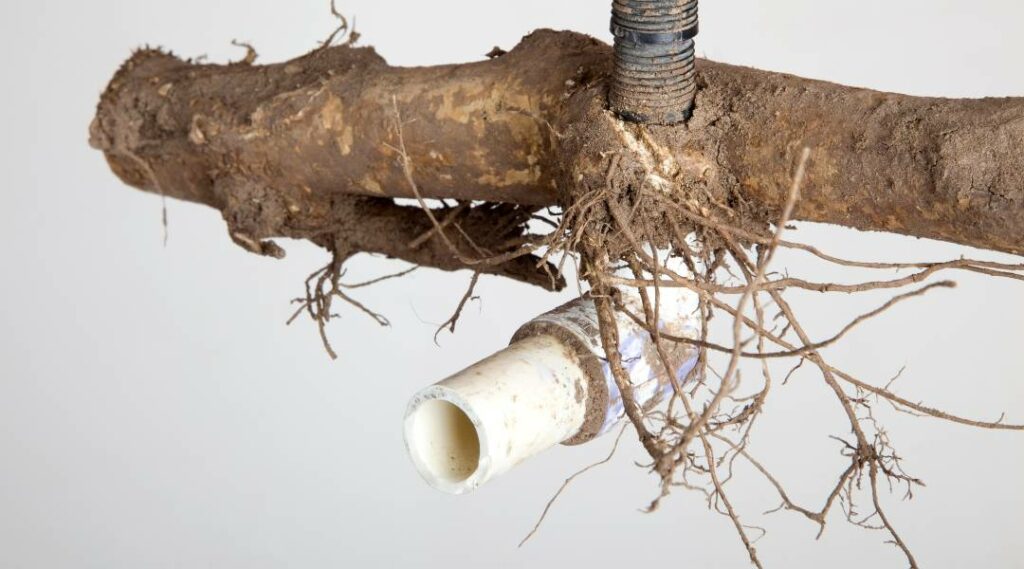Tree roots, while seemingly gentle giants above ground, can be stealthy adversaries to your water lines below. The small absorbing roots of a tree may stretch two to three times beyond its canopy’s reach, silently seeking moisture and nutrients. Contrary to popular belief, these roots don’t break into the pipes with brute force; instead, they exploit pre-existing vulnerabilities such as cracks or air gaps in search of water.
This opportunistic behavior leads many homeowners to mistakenly blame trees for damaged pipelines when in reality the damage was pre-existing. Understanding this dynamic is crucial for addressing and preventing potential issues with your home’s plumbing system effectively.
Spotting Root Intrusion Signs
If you notice sudden drops in water pressure or unexpected wet spots in your yard, don’t overlook them. These signs could point towards root intrusion into your water lines. Tree roots naturally seek moisture and can infiltrate existing cracks or gaps in pipes, seeking nutrients.
Contrary to common belief, these roots aren’t the initial cause of pipe damage but exploit pre-existing vulnerabilities for their growth needs. As trees mature and their absorbing roots extend far beyond the visible canopy—sometimes up to three times its spread—they might exacerbate issues by widening small breaches over time due to their pursuit of water resources underground. Before concluding that removal is the only solution when faced with such challenges, consider professional water line repair options.
This approach addresses both immediate repairs and long-term infrastructure resilience against root invasion.
Preventative Measures Against Root Damage
To prevent root damage in your water lines, you need to be proactive. Suppose multiple fixtures drain slowly or emit foul smells, suspect tree roots. Strange noises from toilets and drains can also signal trouble below ground.
Mechanical cutting uses robots with cameras to cut offending roots without fixing pipes—a temporary solution at best. Chemical treatments present an alternative method for those hesitant about robotic intervention in their sewer lines, but remember that these only address the symptoms rather than repair the underlying pipe damage itself. Being vigilant about early signs of intrusion by tree roots into your sewer system is key to avoiding more severe issues down the line.
Navigating Water Line Repair Options
When dealing with water line damage by tree roots, a proactive approach will save you time and money. Inspect your lines periodically, especially if large trees are nearby. Should root intrusion occur, repairs need swift action to prevent extensive damage.
Consulting local laws is crucial since liability may vary; some places hold the tree owner responsible for damages caused by their roots. Consider insurance that covers water line repair, but review what’s included carefully before purchasing. Additionally, repairing damaged lines might not demand extensive excavation or high costs if caught early.
Techniques exist that allow professionals to thread new lines through existing ones minimally invasively, keeping disruption and expense low.
Implementing Long-term Solutions
To ensure your water lines stay intact, consider removing trees close to them. Trees beautify our surroundings but pose risks when roots encroach on plumbing. These roots can break through pipes, causing significant damage or necessitating a system overhaul — an expensive and time-consuming process.
By eliminating trees near your pipelines, you safeguard against such intrusion and future expenses. This proactive step not only prevents potential root problems but also saves considerable effort and resources down the line.














